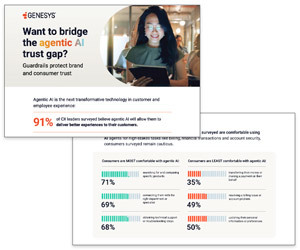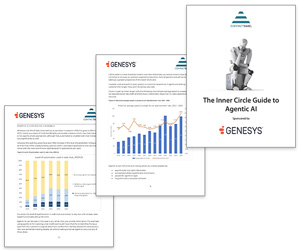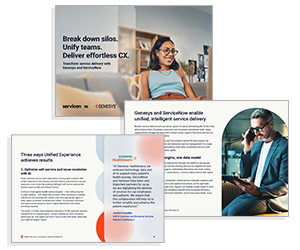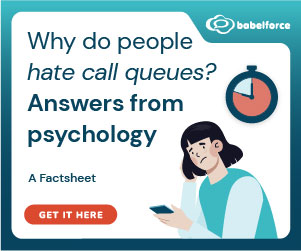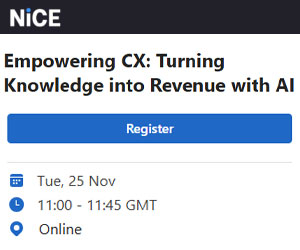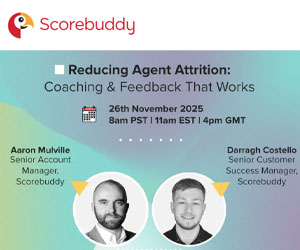Mari Yamaguchi of Genesys discusses the many approaches to creating Customer Experience Satisfaction Surveys and some additional best practices to keep in mind.
When it comes to customer experience, you know that customer satisfaction is paramount to making sure your brand or company not only retains customers but can also actively gain new ones.
Customer experience and satisfaction can mean many different things depending on who your customer is. But, ultimately, it should focus on effort — how an experience made them feel and what they value.
Types of Customer Experience Satisfaction Surveys
Because your company understands that a customer’s experience is vital to growing the future, you probably measure it using any one (or all) of these popular survey methodologies:
1. Net Promoter Score (NPS)
The most popular measure of customer loyalty developed and trademarked by Bain and Company. Some of the world’s leading brands, including Genesys, use NPS.
The hallmark of NPS is the question: “How likely are you to recommend [insert company name] to a friend?”
It’s popular among both business-to-consumer and business-to-business companies. And it’s used throughout a customer’s life cycle with a brand to measure overall relationship with your company.
2. Customer Effort Score (CES)
Aimed at measuring how easy it was for a customer to complete a task or interaction with your company, a typical CES question could ask: “How easy was it to do business with us today?”
This survey commonly follows a specific interaction with your customer service team.
3. Customer Satisfaction (CSAT)
This is used as a KPI to specifically measure how satisfied a customer is with a company’s product or service.
A common CSAT survey question will ask “How would you rate your overall satisfaction with [insert goods/services] you received?”
It targets a very specific interaction, product or event.
Best Practices in Survey Design
No matter which survey method you use, it can become a key tool to improve your business, ensure your customers are happy and loyal, and realize your company’s key differentiator factors.
What you want to measure will ultimately determine which type of survey methodology you use.
Here are a few best practices when deploying your next customer satisfaction metric.
Do’s:
Have clear objectives and goals – While you can’t improve what you don’t measure, you also can’t measure without first knowing the “what”. This will be a guidepost to determine which survey you choose to use — and how you’ll use the data you receive.
Allow free-form feedback – Open text fields in a survey allow you to collect more details and insights behind the score. This is where you can uncover nuggets of vital information you might not have expected or additional proof point from the customer’s words to prove a hypothesis.
Make it easily accessible – Nothing puts a damper on getting the right feedback more than making your customer jump through additional hoops just to offer feedback.
Optimize it for personal mobile devices, via email, or shortly after a phone interaction.
You know how your customer would like to interact or their preferred way of contact by the way they reached you — leverage that information to cater how you deliver your survey.
Don’ts
Ask leading questions – Avoid questions that leave your customer with only one way to respond or questions that reference more than one issue for a given response. This leads to confusion and frustration for the customer. And it will negatively skew your data.
Use internal terminology or acronyms – Understand that all levels of expertise within a customer account could be responding to your survey. Avoid using internally focused language, acronyms or industry jargon. Don’t confuse your respondents. That way they can clearly articulate the purpose of the question.
Make the survey too long and ask redundant questions – Most people won’t finish long surveys. Most customers know a company has gleaned a lot of data on them, and it becomes frustrating when a survey asks a seemingly easy and apparent question (e.g. “How long have you been using our services/product?”).
Don’t ask questions in a survey for which you likely already have information; do a little digging and research among your data teams before including such questions.
What to Do With Customer Satisfaction Survey Results
Measuring a customer’s satisfaction or their experience is important, but what you do with the data is even more imperative.
Customers are being generous with their time and their insights when filling out a survey, so it’s vital for them to know you’re going to do something with it.
Close-Loop Process
Genesys have adopted NPS not only as a metric but also as a system and framework in which customer insights are collected and used to create business outcomes.
A vital piece of our NPS system is the closed-loop process. Within a prescribed timeframe, Genesys reach out to customers who give negative feedback and work with internal teams to find a potential solution. The company then relays that action back to the customer.
Any form of closed-loop process can be adapted to whatever survey method you use. However, this immediate response to any negative feedback from a customer lets them know that someone is owning their insight and that it hasn’t fallen into a black hole.
It’s a small step in helping to rebuild their confidence with your organization.
Deep-Dive Analysis
Look for trends, patterns and improvements. Knowing the data enables you to get a better understanding of certain customer behaviours and allows for more tailored improvements or personalized services.
In Summary
Whatever survey methodology you use to track your customer’s experience with your organization, it’s vital that every part of the company understands that they play a role in that experience.
At the end of the day, customer service isn’t shouldered by one department.
It’s a team sport; everyone in the company owns it. Make sure these metrics are visible to everyone and that they understand they’re empowered to do right for the customer.
Author: Robyn Coppell
Published On: 29th Nov 2019 - Last modified: 4th Dec 2019
Read more about - Guest Blogs, Genesys











